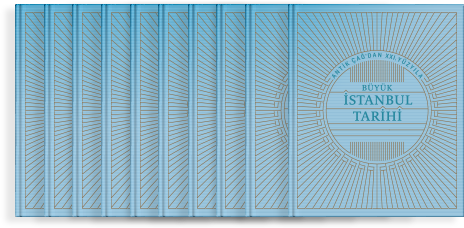In this work, concerning style and language, we pay attention to address to academic professionalism as well as general audience. As we hope this book used as textbook on courses related to the history of Istanbul in and outside of Turkey, we prefer a fluent and comprehensive style and language in Turkish and in English. Accordingly we follow a coherent and easy spelling as much as possible. Secondly it is very difficult to abstain all inconsistencies in such a voluminous work with different types of texts and themes covering long periods of history.
We have preferred American English spelling in writings, and adopted terms and names according to their common usage in English. In addition, Turkish names and terms (from Republic era) were written as they are spelled in Modern Turkish while proper names from Ottoman era were spelled according to Arabic writing (Bayezid, Mahmud, Mehmed instead of Bayezit, Mahmut, Mehmet; İhtisab Nezareti instead of İhtisap Nezareti; except for noun phrases that were written according to their actual usage, e.g. Sultan Mahmut Türbesi). Turkish terms were shown in italic in their first mention, except those names and terms that have standard Anglicized English spelling (e.g. agha, pasha, Janissary instead of ağa, paşa, Yeniçeri; Istanbul, Cairo, Aleppo instead of İstanbul, Kahire, Halep, etc.). We use some proper names and terms together with their English counterparts at least once in an article (e.g. Bab-ı Hümayun and the Imperial Gate; İttihat ve Terakki Cemiyeti and the Committee of Union and Progress).
We transliterate Arabic terms according to Modern Arabic spelling, and Greek terms and names from Byzantine history according to their usage in standard Modern English.
Using footnotes were completely left to the authors’ preferences unless necessary. To prevent the footnotes from turning into a mass of bibliographical information, we keep a shortened version of the references while leaving the full bibliographical information to the end of the article. In some articles that use the footnotes to cite sources with full bibliographical information, a separate bibliography section include only the sources that are not cited in the footnotes. In cases where an author preferred not to give a Bibliography, full bibliographical information was given in the footnotes in the first mention of the reference.
Longer quotations in the text written as separate and indented paragraphs, while shorter ones were shown with quotation marks.
Book names were written in italic but articles and book sections were kept in quotation marks in footnotes and bibliography as well as withen the text.





